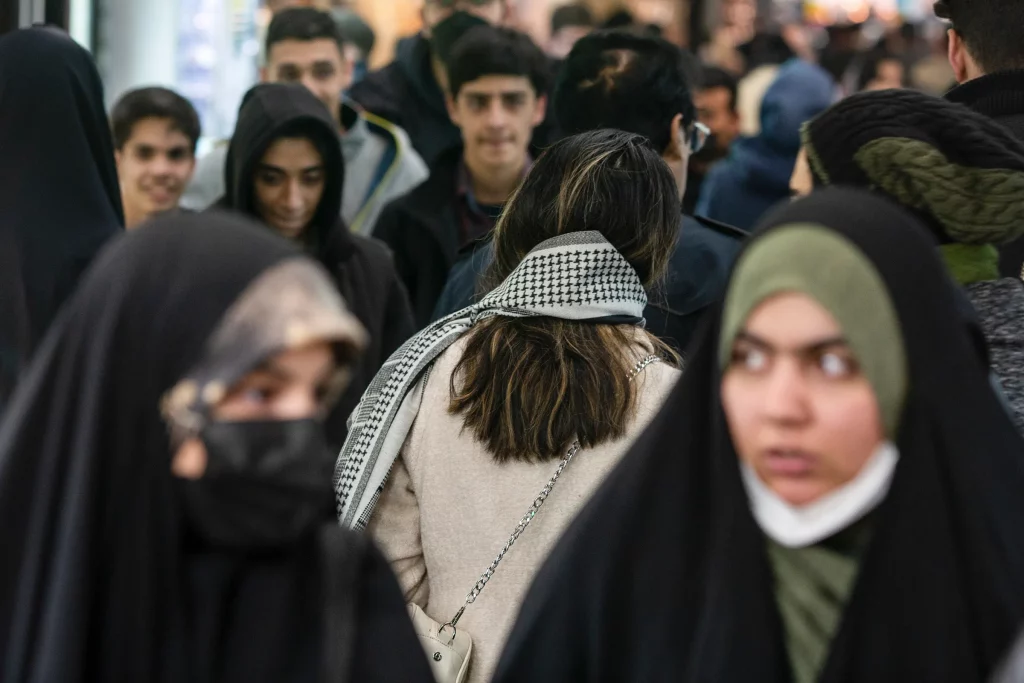Hijab is back with full fury in Iran. The white vans of the morality police patrol, known as Guidance Patrols (Gasht-e-Ershad) are out in force once again. Videos show women and girls being dragged from the streets and detainees reportedly being beaten and abused. Adding fuel to fire, fresh details of the case of Nika Shakarami, reportedly sexually assaulted and killed by men working for the security forces in 2022, have emerged buttressing the charge of brutality by the morality police. Her family said last week that her sister Aida had just been arrested for breaching the dress code.
Supporters of the jailed Nobel Peace laureate Narges Mohammadi are circulating her purported message from prison urging Iranians to protest against what she describes as a “war against women.” All this is happening at a time when the attention of the world has shifted from the acts of omission and commission of the repressive regime in Tehran to the outbreak of hostilities between Iran and Israel over the latter’s recent air strike hitting Iran’s embassy in Damascus.
However, the women of Iran have been singled out by the regime not only for curbing their freedom to choose what they would wear, but making them an object lesson for defiance of authorities that has emboldened the population, irrespective of genders, to voice protest against alleged rampant corruption by government officials and religious heads.
Harsh “hijab and chastity” legislation is on its way and the authorities have started using traffic camera footage to fine women driving bareheaded or in hats, confiscate their cars, sentence them to morality classes or flogging. In many cases, women are being denied access to public transport or banks by officials accusing them of flouting the dress rules. Even businesses have been closed for not enforcing the law for employees or customers. As international attention is now focused elsewhere, like the conflict in Gaza for example, the regime in Iran seems to have found it an opportune moment to intensify pressure on defiant women and their male supporters who are seen protesting when women are being picked up from the streets by morality police personnel in notorious white vans. The movement for the rights of Iranian women to dress the way they choose got a shot in the arm when Mahsa Amini died in custody in September 2022. The young Iranian-Kurdish woman had been detained by the morality police for “improper hijab.” In protest, young women of Iran took to the streets and cast off their scarves in fury. Their parents too joined the chorus of condemnation of the government. Men lent force to the cries of “woman, life, freedom.” That became a turning point and the regime responded with vengeance, killing hundreds and arresting thousands. In no time, the demonstrations were quelled successfully with speed. But many women refused to obey the strict dress code.
The authorities in Iran are a worried lot because the protesting women are effectively encouraging the men folk to question President Ebrahim Raisi’s failure to fulfil his electoral promises to pursue rampant corruption among top government officials that has led to many recent scandals. The situation has become so explosive that the Raisi government has become an advocate of Guidance Patrols and has completely forgotten its election promises of dismantling them. Some newspapers have even written editorials sharply criticising the Raisi government for resuming the white vans, reneging on its election pledge to dismantle them and sanctioning their resurgence on the streets. Raisi had made the promise during his election campaign in 2021. The official media such as the government mouthpiece, the Islamic Republic News Agency (IRNA), however, claims the government had promised to launch special investigative units as guidance patrols to clamp down on corruption and made significant progress in this regard. But, there is no substantive evidence to prove the claim that the government had dismissed scores of administrators for misconduct or incompetence. These included officials appointed by previous administrations as well as Raisi’s own.
There is hardly any doubt that the repressive administration in Iran is less busy in curbing corruption and inefficiency than using its resources to purge dissenting voices to establish even harder control over state institutions, including universities – the cradle of free spirit and youth rebellion. The women of the country have not only proved to be soft targets, but also scapegoats.
A society incapable or unwilling to protect its children and women is destined to perish. The ancient people of Persia (today’s Iran) may not be exceptions.
